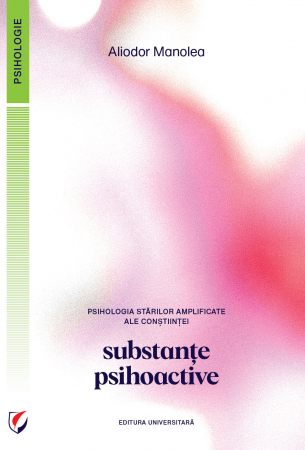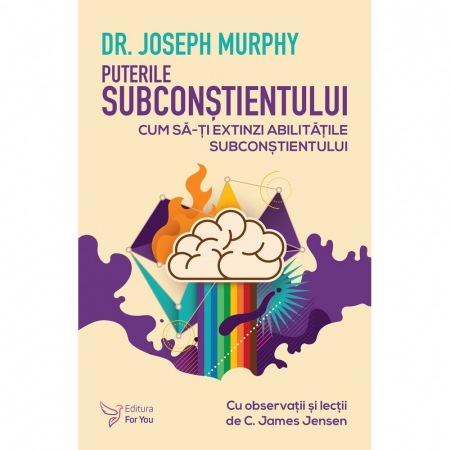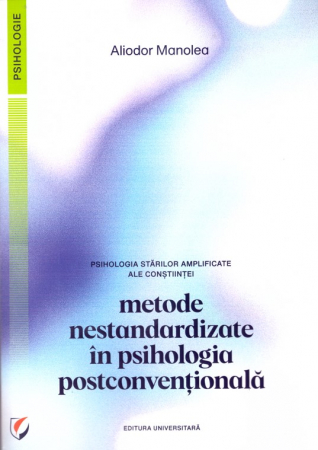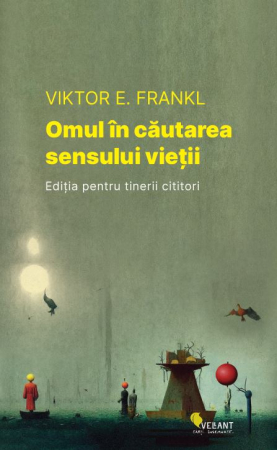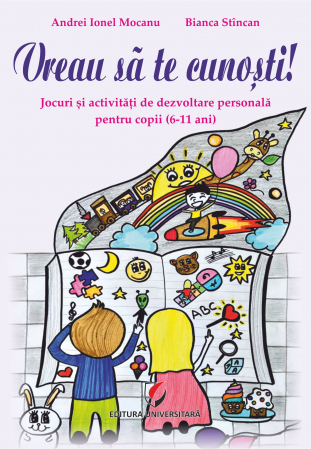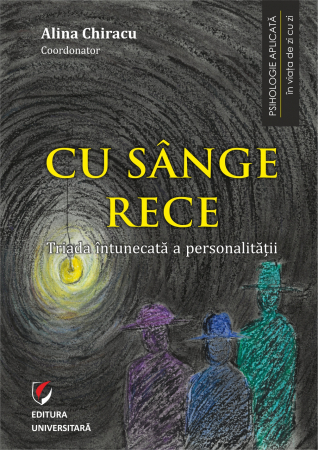Manuscript proposals: [email protected] / 0745 204 115 //// Tracking orders Individuals / Sales: 0745 200 357 / Orders Legal entities: 0721 722 783
ISBN: 978-606-28-1640-7
DOI: https://doi.org/10.5682/9786062816407
Publisher year: 2023
Pages: 262
Publisher: Editura Universitară
Author: Alina Chiracu - coordonator
Edition: I
Delivery date: 1
Product Code:
9786062816407
Do you need help?
0745 200 357
- Description
- Download (1)
- More details
- Content
- Authors
- Reviews (0)
First, we get attached because we have to survive. Then because we have to continue to survive. In our relationships. We attach ourselves where we feel warmth and availability and love. We build our operating models. And we were working. Better or less well. We assiduously look for a man with whom we can shelter, to whom we can return whenever we go exploring the world. And if we find this man, then we will free ourselves from any constraints, internal or external... and we will be free precisely through the close connection with him. Paradoxical, isn't it? The more bound, the freer. And yet, the more disconnected from humans we are, the more limited our searches will be. And we will get stuck in our own anxieties and question marks. We don't choose our attachment style... we build it, it is built in us, and it imposes states, thoughts and emotions and actions on us. It guides us in the choice of partners. It is the result of our history. Let's get to know him and understand him. It will be easier for us to explain, when we are in critical situations, why we retreat to cry alone with ourselves or why we rush to the phone to call someone or why we cling to the person next to us, or vacillate between fighting and give up. I don't think that the attachment is loaded with value. I don't think it's good or bad. I think that it is what it is and that if it doesn't make us feel good, then maybe it would be better to reconfigure it. Through personal analysis, through explanations, through psychotherapy, through healing and constructive life choices.
Alina Chiracu
Alina Chiracu
-
It's warm and good next to you. Attachment
Download
Today's volume is about attachment. And attachment is about relationships. It is about the way we work with others and how we seek the warmth of closeness. It is about the models that are impregnated in us from the first days of life, about what we learn that relationships are and about the way we relate to them.
Attachment ties represent not only ways of survival, but also behavioral patterns persistent over time and resistant to change. They are lived with intensity and direct actions, orientations, choices. Once born, the human being (and not only the human being) needs to attach himself to a person who can offer him support and warmth. The search for closeness becomes a goal in itself... a rather unconscious goal, rooted in the instinct of conservation. The small child seems to have the pseudo-awareness of the fact that he cannot survive alone and tries his best to be near an adult who can offer him protection and safety.
Children raised in safe environments learn that the world is a good place, in which they can develop healthily and which they can explore with courage, that there are available and receptive adults somewhere nearby who can intervene when needed. Instead, children raised in cold or hostile environments, with inattentive or negligent parents, will be far too concerned with their own (in)security to have any energy left to invest in exploring the world. For this reason, openness to knowledge can be severely damaged in children with insecure attachment styles.
Attachment styles define the person. As they were built during early childhood, these relationship patterns are carried throughout life, manifesting in all subsequent relationships. Not infrequently, people ask for the help of psychotherapists to redefine in one way or another the attachment system so well impregnated in their psyche. Other times, people don't explain where the inappropriate functioning models come from, and call them toxic. Nothing is toxic here. It's just about the interpretation of relationships, about how they enter and leave relationships, about what they feel towards a partner and what they expect from him. In any of these cases, first of all the attachment patterns must be identified, the behaviors adjacent to them explained and only then an intervention attempted.
Attachment talks about how we were treated in childhood, about how we learned that people should relate. It is a lesson repeated countless times until it is learned and applied in any context: in the group of friends, at school, in romantic relationships, at work. He describes the way we love and let ourselves be loved, the way we manage conflicts with others, the reactions we have when we are disappointed or hurt. There are people who prefer to withdraw, to live their personal dramas in solitude (avoidant), or people who worry about their own value and how worthy of love they can be (anxious). There are obviously people who are free from these (secure) pressures. If we understood that these styles, although deeply embedded in us, have a clear explanation and can be adjusted to some extent, life would become more tolerable, relationships more acceptable, the joy of living would be greater.
Although it was imposed on us in one form or another, although it comes to imprint all subsequent relationships, the attachment style should not be considered a burden, but rather a component of the human being, which can be managed or at least understood.
Attachment ties represent not only ways of survival, but also behavioral patterns persistent over time and resistant to change. They are lived with intensity and direct actions, orientations, choices. Once born, the human being (and not only the human being) needs to attach himself to a person who can offer him support and warmth. The search for closeness becomes a goal in itself... a rather unconscious goal, rooted in the instinct of conservation. The small child seems to have the pseudo-awareness of the fact that he cannot survive alone and tries his best to be near an adult who can offer him protection and safety.
Children raised in safe environments learn that the world is a good place, in which they can develop healthily and which they can explore with courage, that there are available and receptive adults somewhere nearby who can intervene when needed. Instead, children raised in cold or hostile environments, with inattentive or negligent parents, will be far too concerned with their own (in)security to have any energy left to invest in exploring the world. For this reason, openness to knowledge can be severely damaged in children with insecure attachment styles.
Attachment styles define the person. As they were built during early childhood, these relationship patterns are carried throughout life, manifesting in all subsequent relationships. Not infrequently, people ask for the help of psychotherapists to redefine in one way or another the attachment system so well impregnated in their psyche. Other times, people don't explain where the inappropriate functioning models come from, and call them toxic. Nothing is toxic here. It's just about the interpretation of relationships, about how they enter and leave relationships, about what they feel towards a partner and what they expect from him. In any of these cases, first of all the attachment patterns must be identified, the behaviors adjacent to them explained and only then an intervention attempted.
Attachment talks about how we were treated in childhood, about how we learned that people should relate. It is a lesson repeated countless times until it is learned and applied in any context: in the group of friends, at school, in romantic relationships, at work. He describes the way we love and let ourselves be loved, the way we manage conflicts with others, the reactions we have when we are disappointed or hurt. There are people who prefer to withdraw, to live their personal dramas in solitude (avoidant), or people who worry about their own value and how worthy of love they can be (anxious). There are obviously people who are free from these (secure) pressures. If we understood that these styles, although deeply embedded in us, have a clear explanation and can be adjusted to some extent, life would become more tolerable, relationships more acceptable, the joy of living would be greater.
Although it was imposed on us in one form or another, although it comes to imprint all subsequent relationships, the attachment style should not be considered a burden, but rather a component of the human being, which can be managed or at least understood.
Foreword / 7
Brief history of attachment theory / 9
Me and You: About attachment and devotion / 13
The invisible thread, the attachment / 18
Nobody's child / 23
It's warm and good next to you / 31
What is part of us / 37
My story / 40
Numbers / 42
Attachment and detachment / 46
Part I Attachment / 49
Structural aspects of attachment / 50
Measuring attachment styles / 68
Attachment - Then and now / 77
Attachment in adolescence / 85
Attachment styles and school adaptation / 93
Attachment and the therapeutic relationship / 102
Attachment to community and personal values: role, connections and approaches / 110
Part II Studies / 123
The role of attachment and the family in the emergence of cognitive schemes / 124
The role of faith in the relationship between attachment and separation anxiety in couples / 157
Leadership analyzed through the prism of attachment and cognitive schemes / 179
The role of irrational beliefs in the relationship between attachment styles and life satisfaction / 221
Brief history of attachment theory / 9
Me and You: About attachment and devotion / 13
The invisible thread, the attachment / 18
Nobody's child / 23
It's warm and good next to you / 31
What is part of us / 37
My story / 40
Numbers / 42
Attachment and detachment / 46
Part I Attachment / 49
Structural aspects of attachment / 50
Measuring attachment styles / 68
Attachment - Then and now / 77
Attachment in adolescence / 85
Attachment styles and school adaptation / 93
Attachment and the therapeutic relationship / 102
Attachment to community and personal values: role, connections and approaches / 110
Part II Studies / 123
The role of attachment and the family in the emergence of cognitive schemes / 124
The role of faith in the relationship between attachment and separation anxiety in couples / 157
Leadership analyzed through the prism of attachment and cognitive schemes / 179
The role of irrational beliefs in the relationship between attachment styles and life satisfaction / 221
ALINA CHIRACU - Coordonator
If you want to express your opinion about this product you can add a review.
write a review

6359.png)
![It's warm and good next to you. Attachment - Alina Chiracu - coordonator [1] It's warm and good next to you. Attachment - Alina Chiracu - coordonator [1]](https://gomagcdn.ro/domains/editurauniversitara.ro/files/product/large/e-cald-si-bine-langa-tine-atasamentul-6461215740.jpg)


